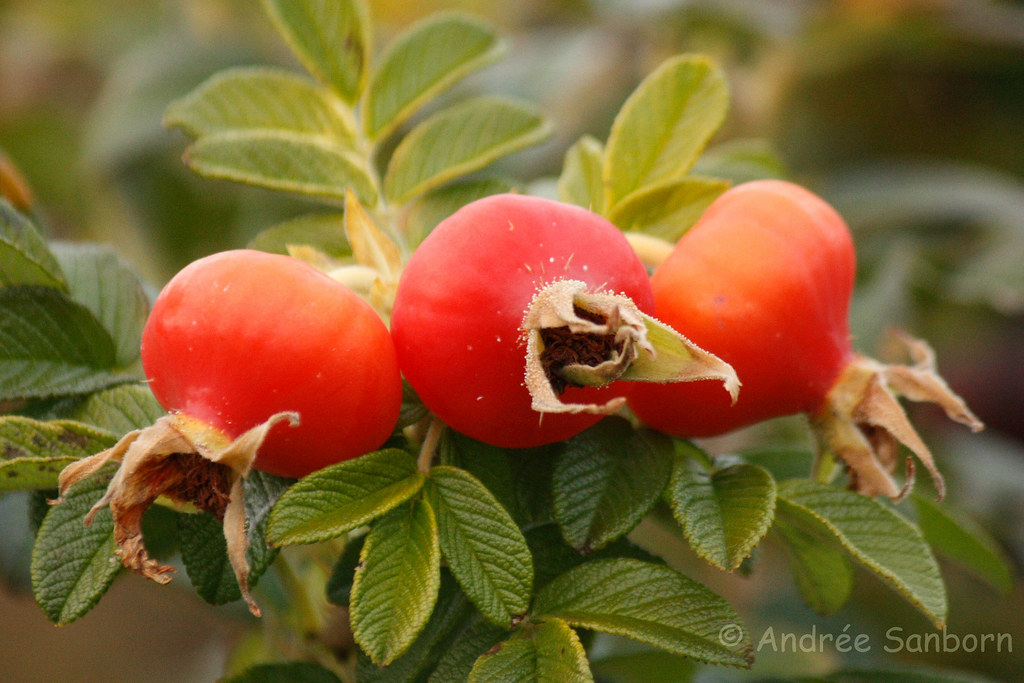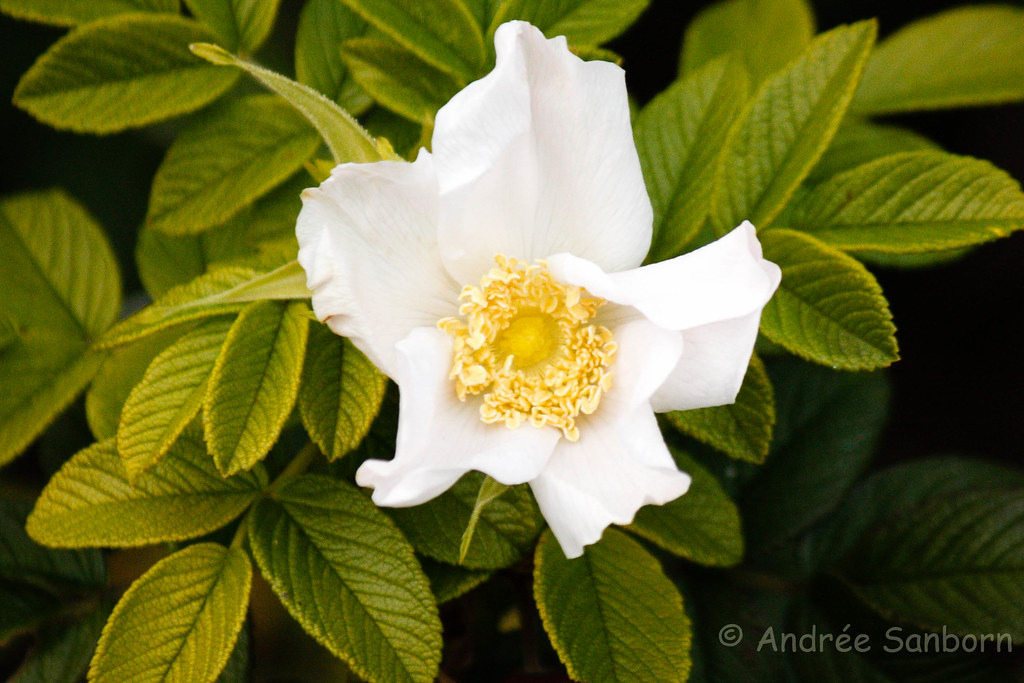Also called wrinkled rose, tomato rose, beach tomato, sea tomato, saltspray rose and beach rose. The USDA fact sheet on rugosa:
Uses
Traditionally used for its beautification qualities, rugosa rose’s value as an erosion control type plant has recently expanded to include sand dune stabilization. Its ability to withstand salt spray makes it a good choice to plant on sand dunes and roadsides. With its thorny stems, this shrub can be strategically established at locations to direct pedestrians between the sand dunes. The ripe fruits (hips) this plant produces are high in vitamin C, and can be made into teas, jams and jellies. To a lesser degree, this species offers some food and cover to deer, and small birds and mammals.Status
Please consult the PLANTS Web site and your State Department of Natural Resources for this plant’s current status (e.g. threatened or endangered species, state noxious status, and wetland indicator values).Invasiveness
This plant is considered noxious in some states. This plant may be invasive in some regions or habitats and may displace desirable vegetation if not properly managed. Please consult with your local NRCS Field Office, Cooperative Extension Service office, or state natural resource or agriculture department regarding its status and use. Invasive information is also available from the PLANTS Web site at plants.usda.gov.

Rosehips: the fruit of rugosa.
_/\_/\_

No comments:
Post a Comment
Thank you for leaving a comment on meeyauw's pad. I enjoy reading constructive comments, tips and ideas that help me improve my photographs.